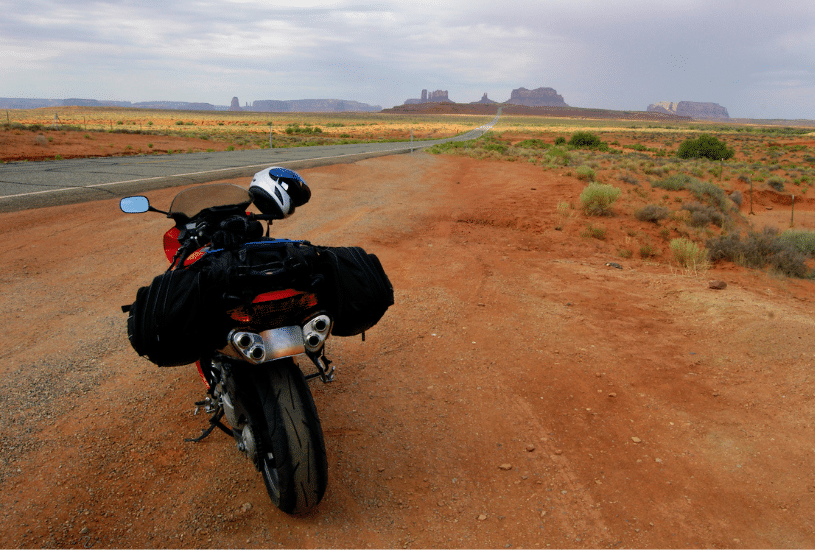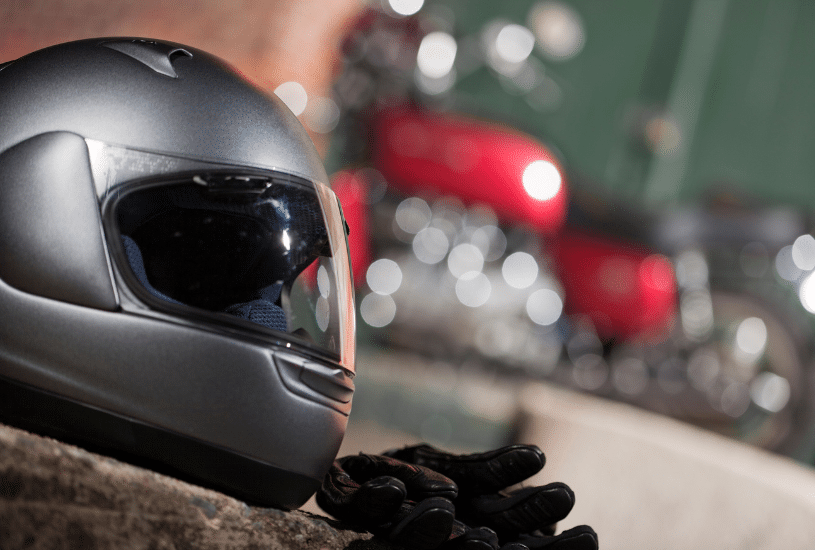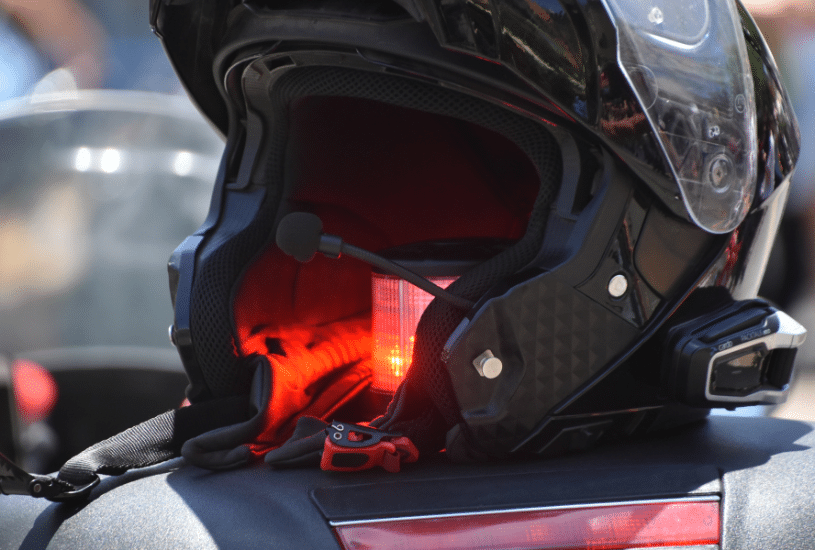Lane splitting is a common and practical motorcycle riding technique that is used all over the world. In spite of this, there are very stringent laws on lane splitting in the United States, and people often wonder if lane splitting is legal in California.
In a word: yes. However, even though it is allowed, the California lane splitting law has only been in place for a few years.
There are specific guidelines in place that are not common knowledge about lane splitting in California. We recommend brushing up on them for both safety and legal purposes.
What is splitting lanes?
Splitting lanes is riding a motorcycle between the lanes or rows of traffic. It can also be called stripe riding or whitening, and its predominant use is to save time in congested traffic.

While most people focus on lane splitting as a technique for speed, it actually has practical safety use as well. Splitting lanes is a great way to get out of another driver’s blind spot, or to avoid rear end collisions in circumstances where a bike may not be seen as easily. Because motorcycles are smaller and lighter than normal cars, they are prone to being bumped if other drivers are not paying attention; lane splitting helps mitigate this.
In what states is lane splitting legal?
With a new lane splitting law passed in 2017, California is the only state where lane splitting is fully legal. Utah and Hawaii have modified laws allowing some iterations lane splitting, and there are 5 other states currently considering legalization.
On top of that, 10 states including Texas, New Mexico, and North Carolina do not have specific mention or prohibition of the act, but it is still possible to get a ticket for lane splitting in these places. It is fully illegal in 32 states.
The California lane splitting law has helped government agencies, law enforcement, and legal representatives have clearer terms to refer to when defining line splitting as driving. These guidelines also allow California Highway Patrol and riders alike to have better guidelines for riding.
California lane splitting laws
A common question is ‘why is lane splitting legal in California but not other places?’
In 2017, then-governor Jerry Brown signed Assembly Bill 51 into law because lane-splitting was a legal grey area before then. Once it was passed into law, the California Highway Patrol was able to create clear guidelines around it for all motorists’ safety. In section 400 of the bill, lane splitting is defined as a motorcycle that has two wheels in contact with the ground between rows of stopped or moving vehicles in the same lane.
Another thing people want to know is how fast can you split lanes in California? While there is not a precise sign-based speed limit, it is recommended that bikers only change lanes in low-speed areas and do not exceed 10 miles per hour faster than surrounding vehicles. This means if the speed limit is 30 miles per hour, a motorcyclist should not exceed 40 mph while lane splitting.
Lane splitting safety tips
Lane splitting should always be done cautiously and only by experienced riders. You should never go into a lane split without thinking about the following safety tips:
- Always consider your full surroundings before beginning a lane split – these include lane width, traffic speed, weather, and visibility conditions.
- Lane splitting is typically safer between the far left lanes of traffic than others.
- Do not assume other drivers are paying attention or can always see you. Avoid staying in blind spots or lingering in between vehicles.
- Wear bright colored and/or reflective gear at all times of the day.
- Use your high beams during daylight.
These tips and a working knowledge of California lane splitting laws will help you ride with confidence.
Lane splitting risks
Even with a strong knowledge of the laws and safety tips for lane splitting, it can be dangerous if you don’t pay attention to certain things:
Moderate your speed while lane-splitting.
Avoid lane splitting next to oversized vehicles such as big rigs or city buses.
Do not ride on the shoulder- this is not lane splitting, and is illegal.
While lane splitting reduces the rate of motorcyclists who get rear ended, it increases how often a motorcycle rider will rear end another car. Thus, watch your front!
Traffic might be too erratic to lane split. This is especially important to watch for during traffic jams or slow zones; while this is the most opportune way to save time, there might not be a reliable gap in each lane to safely split them.

Most of these risks and countermeasures are addressed in proper motorcycle safety education and skill-building. However, we always recommend riding as though other cars are not up to speed on the laws, policies and safety measures to keep you safe.
Speak with a California Motorcycle Accident Attorney
At the Law Tigers, riding is in our blood. Our passion for motorcycles and the community is what prompted us to become the leading specialists in accident and injury representation. We pride ourselves on having decades of experience in helping riders stay safe on the road.
We proudly serve the entire state of California, and are happy to provide you a free case evaluation. It’s better to ride with the law on your side.




